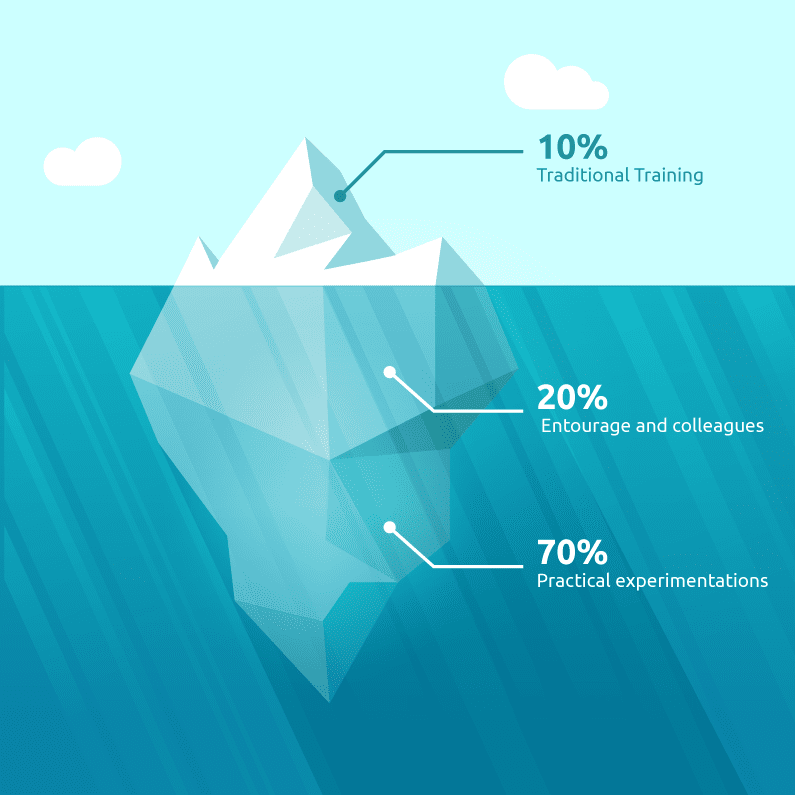How to keep the attention of the trainees during a training? When do participants drop out? For what reasons? What is the best duration for a virtual classroom? The answer is not simple. Here are our tips to answer these questions and make no mistakes!
For adults, the attention span is often said to be between 10 and 15 minutes. There are not really any studies that have confirmed this, as this is more of an observation. Adults (men or women) have a sustained attention span (cognitive activity over a long period while maintaining a high and stable level of efficiency) which varies greatly from one individual to another, ranging from 5 minutes to 1 hour. Who can do more can do less, and it is easier to memorise something shorter. Therefore, to define an optimal training duration, it is best to consider a set of relevant parameters.
Joseph TRENAMAN in his book “Communication and Comprehension”, published in 1967, introduced the notion of withholding information and “retrieving” the content of a course (remembering) immediately after its broadcast. To summarise: 41% of the material (the course) is recovered after 15 minutes, against 20% after 40 minutes. But the study dates from 1967 and it was about a recorded lesson (delayed audio channel). In addition, in 40 minutes, more material is processed than in 15 minutes. Today’s learners have different expectations and to keep their attention, it is necessary to concentrate the activities, to optimise them, and above all, to vary the pleasures.

You’ve probably heard of the 70/20/10 learning model. According to Michael LOMBARDO and Robert EICHINGER, attention span and learning time are no longer the only lever for retaining information. In 1996, they suggested this model:
- 70% of what we retain comes from knowledge put into practice and our own experiments,
- 20% of what we learn comes from those around us and the socio-professional context,
- 10% comes from lectures, classical learning and reading.
To be effective, training must not only be short, but also diversified in the methods and instructional activities offered. The participant should no longer be idle, passively listening to the facilitator, but active in his learning. To learn, everyone must be in good listening and production conditions. He must also, within a reasonable period of learning, be able to manipulate the data to better retain them: carry out various exercises, be able to question and obtain answers, do additional research himself, vary the sources of information, carry out missions, collaborate with other people, interact, challenge, testify…
MOBITEACH is THE ideal solution to boost your face-to-face and distance learning sessions. Rich in a set of engaging activities, such as polls, word clouds, post-it notes, various quizzes, or embedding videos and Scorm modules into activities. We advise you in the orchestration of these activities and resources, in the definition of working groups and we make you autonomous in using the tool. Capitalise on and favor the interaction of your trainees. You are no longer constrained in the creativity of your training programmes, so let’s go for it!
To find out more about MOBITEACH, click here








